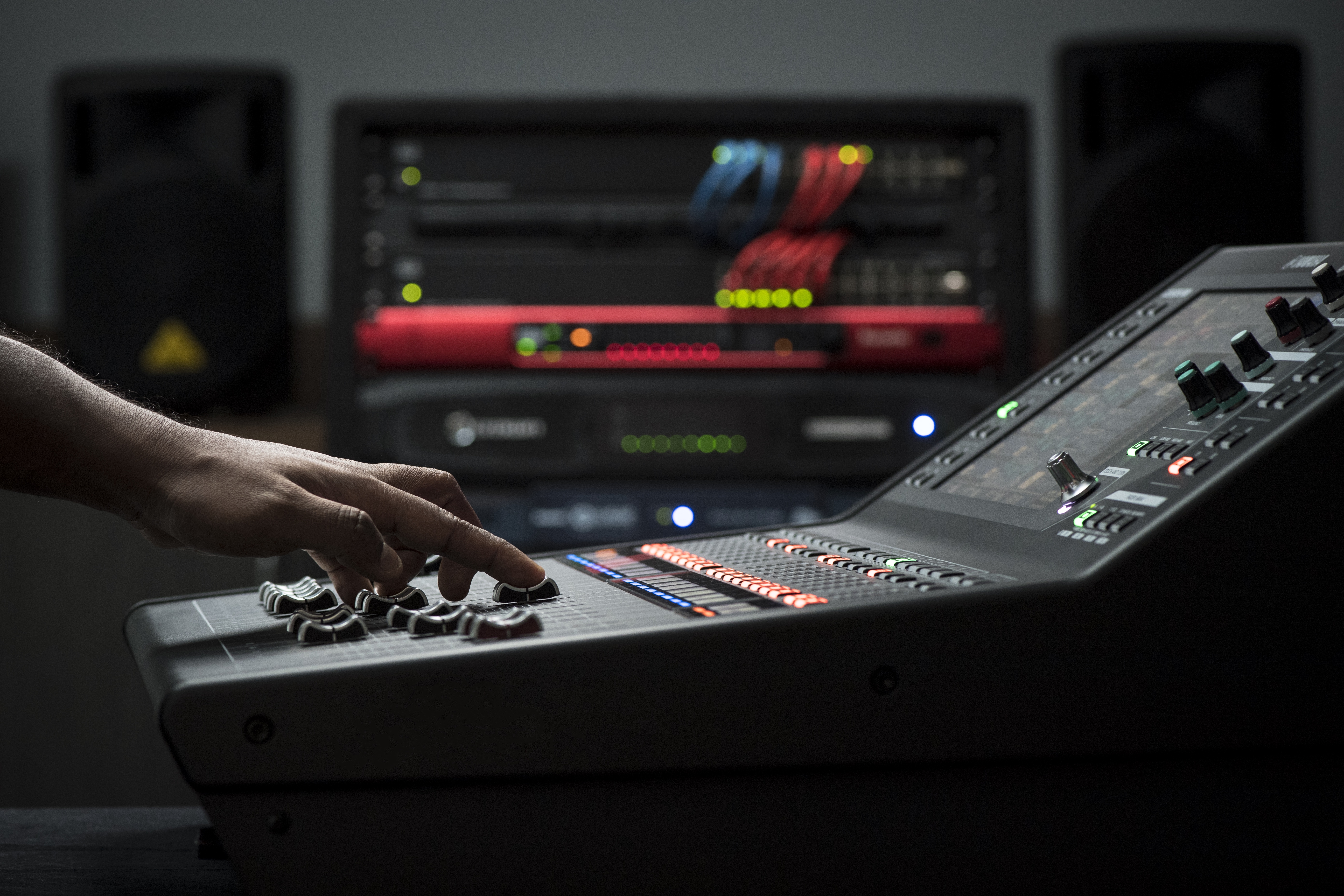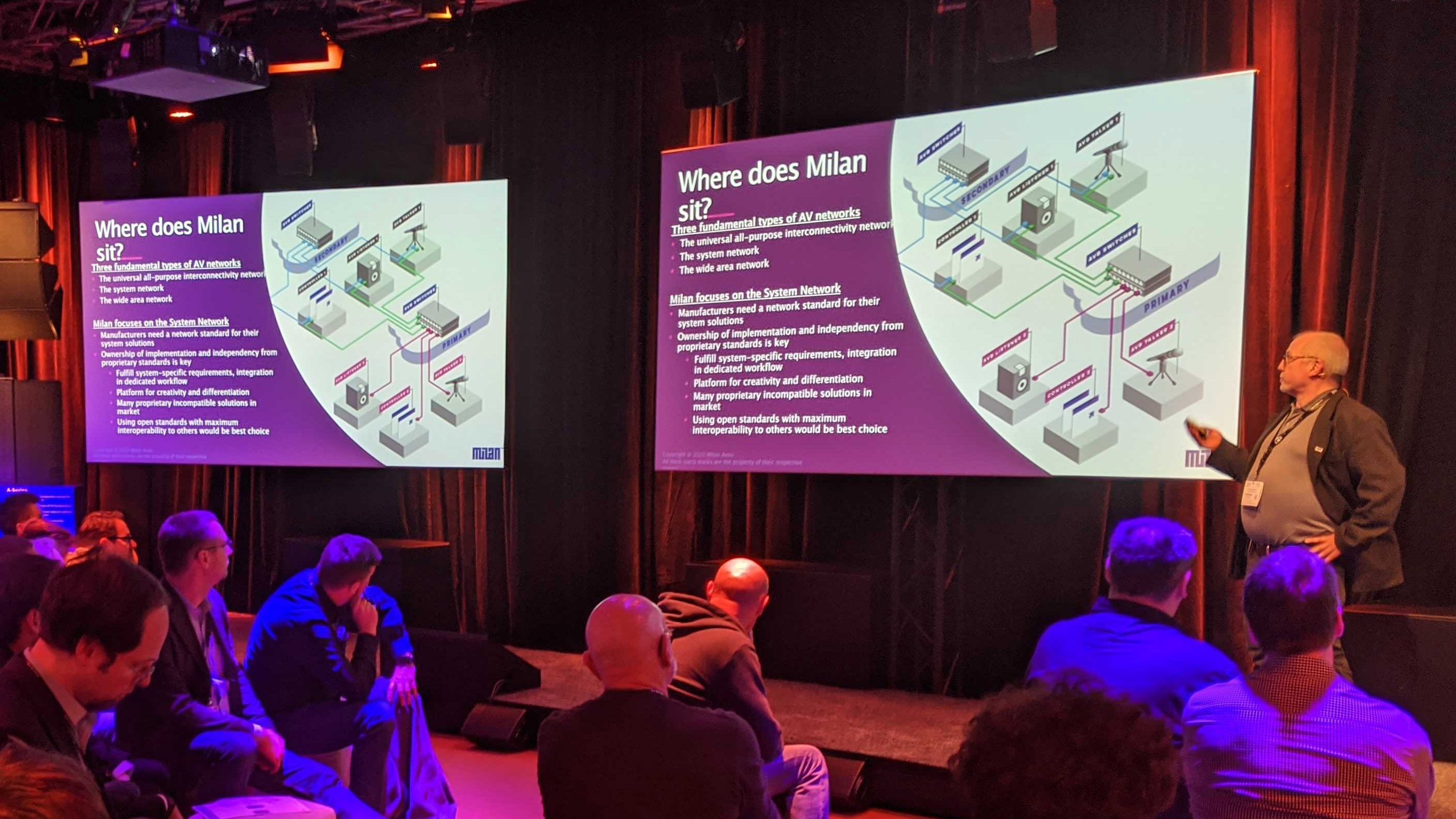Unlimited potential: how networking has transformed professional audio
From CobraNet to Dante and Milan; the past, present and future of this key technology

Networking has brought massive flexibility, as well as enhanced control and monitoring capabilities, to professional audio. MusicRadar looks at the increasing appeal of network technologies such as Dante and Milan to music studios and entertainment venues...
Even from its formative days, the potential benefits of audio networking were evident to more far-sighted observers
If it’s unlikely to be acknowledged with mass public celebrations, 2021 will nonetheless mark an important anniversary for professional audio since will be 25 years since the introduction of CobraNet.
Developed by Peak Audio in the US, CobraNet is generally regarded as the first successful audio-over-Ethernet networking technology, and over the past quarter-century it has become a stalwart of large commercial audio installations ranging from theatres and concert halls to airports and theme parks.
Even from its formative days, the potential benefits of audio networking were evident to more far-sighted observers. As opposed to simple device-to-device connectivity, digital networking prised open a brave new world in which audio could be routed flexibly to wherever it was required.

A crowd of over 58,000 attendees gathered at the Avicii tribute concert at Stockholm’s Friends Arena in December 2019. System optimization and drive was supplied by 16 GALAXY 816 and three GALAXY 816-AES3 processors linked via an AVB network running the new Milan protocol.
As for the AVB network and MILAN protocol, there wasn’t much to say, according to Söderberg. “It’s been rock solid,” he says. “Everything pops up on the screen and works like it’s supposed to.”
By bringing multiple hardware systems and locations onto the same network, thereby reducing the number and size of cables required, it also became possible to slash the time spent on set-up and configuration. With all the elements of an audio production brought together, engineers suddenly had the ability to control, monitor and troubleshoot systems in a far easier fashion.
Although there are still plenty of CobraNet installations out there, issues with jitter and a minimum latency (or delay) of 1.3ms meant that its suitability was limited in some of the more time-sensitive applications such as live sound and broadcast. The result is that, since the turn of the millennium, there have been multiple new technologies that address these problems while also making networking more accessible to a broader base of end-users.
What’s more, it has worked: where audio networking was once the primary preserve of permanent installations such as conference centres, airports and theme parks, it is now practically de rigeur for concert halls, music studios, broadcast centres and so on.
Want all the hottest music and gear news, reviews, deals, features and more, direct to your inbox? Sign up here.
Lee Dennison is head of business development at White Light, an entertainment lighting and AV services specialist for whom concert venues are a major contributor to their overall business. Installation of “an AV over IP network is now often standard practice” in such venues, he says, adding that networking “helps to make a venue as multi-purpose as possible – an important factor when so many sites now host [multiple types] of event.”


For actor and entertainer Hugh Jackman’s 90-show global concert tour, titled “The Man. The Music. The Show.” system design and engineering company, Solotech, chose Avnu and Milan founding member L-Acoustics for the show’s audio system. It included 49 Milan-ready LA12X amplified controllers and two P1 processors, also using Milan, as well as four Avnu-certified Extreme Networks AVB switches. Solotech system engineer Alexandre Bibeau said of the choice to use AVB and Milan, “Our full system used AVB protocol with an analog backup,” he says. “We were using fiber to interconnect the switches, and the whole process was simple, reliable, and a great experience.”
Market leader
The undoubted market leader in 2020 is Dante, developed by Australian company Audinate. Standing for ‘Digital Audio Network Through Ethernet’, Dante offers several major benefits over the first generation of audio over IP technologies, including higher channel count, automatic configuration and – critically – lower latency.
Nearly 15 years after its launch, Dante also benefits from a huge ecosystem of products with support for the technology – 2134 at the time of writing in April 2020, with an annual growth in numbers of approximately 30%. Although broadcast and corporate are currently the areas in which Dante is expanding most rapidly, Audinate senior product manager Brad Price confirms that the technology continues to be a popular choice for music-based applications.
“We’ve seen many recording and production studios migrate to Dante,” he says. “Earlier point-to-point digital transports like MADI only connect from one device to another, limiting routing possibilities and creating the potential for ‘clock smear’ [timing issues] due to the manner in which legacy solutions derive clock from signal content as it is passed from one device to another.”

Dante resolves earlier clocking problems and is also “immune to jitter and clock smear by design,” adds Price. “It delivers the seamless ability to place mics and other audio endpoints anywhere without risk of noise and hum pickup, [and with] bit-perfect transport at nearly any sample rate and automatically configured PTP (Precision Time Protocol) clocking. Since Dante is already a network protocol, it is inherently ‘native’ to computers with Ethernet interfaces, allowing simple software to connect all your professional audio applications directly to the network with no additional hardware required.”
Not all smaller studios or venues may feel that their current requirements call for a permanent network infrastructure. But as the range of IP-addressable products increases, installing a network can help to future-proof a facility. Price notes: “Adding network infrastructure is almost always a good idea for its uses are boundless even if one is not using Dante today. Adding networked infrastructure doesn’t meant that every item must be Dante-enabled; rather, it allows the next generation of audio-over-IP devices to work alongside existing gear, leveraging the network as needed.”

Milan momentum
Dante is not the only game in town, however. Before it reached its current position of dominance, there was considerable excitement around a technology called AVB (Audio Video Bridging). The robust and very low latency nature of AVB won it some major advocates, but ultimately the initial scarcity of (often expensive) network switches that worked with the technology meant that it lost momentum. Over the last 18 months, however, AVB has been on the comeback trail thanks to a new iteration called Milan, which benefits from a “streamlined specification and certification process” guaranteeing interoperability between devices and ensuring they work together at “new levels of convenience, reliability and functionality.”
Developed under the umbrella of the AVnu Alliance, Milan has begun to achieve traction in a number of markets thanks in no small part to its open standard foundation.
“Although most of the projects leveraging Milan have been in live sound environments so far, Milan is built on an open standard, which means it has broad market appeal, is supported by IT, and is interoperable with the entire stack of standards technology in multiple markets,” says Henning Kaltheuner, who is a spokesperson for Milan as well as being head of strategic business development at loudspeaker and amplifier manufacturer d&b audiotechnik.
The technology took a decisive step forward at the ISE show in February with the launch by Neutrik of a Milan audio module. As Kaltheuner notes, “this will allow manufacturers in the pro-audio market to quickly and easily build a wide range of Milan audio products – from single loudspeakers and microphones to complex multichannel mixing desks and multi-port conferencing systems. Neutrik is making it easier for professional audio networking manufacturers to add Milan to their product lines, which will in turn expand the Milan-certified ecosystem of devices.”
One of the most popular aspects of AVB was the existence of a certification scheme that gave users confidence that different products would work together on the same network without difficulty. This approach to ensuring interoperability continues with Milan: “We already have a Milan module certification programme developed. Therefore if a manufacturer implements a Milan-certified module in their device, they can submit it for certification without having to go through certification testing. This should help speed the adoption and growth of certified product availability.”

Focus on future-proofing
Of course, anyone specifying an audio network today needs to think very carefully about not only their needs now, but also how these are likely to evolve over time. At a basic level, says Kaltheuner, a group of core requirements will always stay the same, such as “guaranteed delivery of high-quality audio that is not subject to dropouts, phase shifts, or comb filter effects in line arrays. However, when making decisions on networking infrastructures, end-users need to be confident that they have chosen an enduring protocol and a network that can provide support as their media and data needs scale – today, tomorrow, and even years from now.”
Kaltheuner believes that open standard-based technologies will prove evermore attractive as the AV and IT worlds come closer together. Beyond that, the growing expectations of a consumer world where entertainment experiences are increasingly on a par with those in concert halls and theatres may also be influential.
“As consumer technology continues to advance, audiences expect a richer experience for live sound and other commercial AV applications,” he says. Consequently, “the network must become part of the value proposition for manufacturers; it must be open for creativity to enable the bringing of truly valuable products to market.
"For this to happen, manufacturers must work together with others like them, openly sharing information on technology and products, and together defining the requirements for greater network interoperability. This vision for networking should encompass the ease of the analogue XLR connector and transform it into full media and data interoperability.”
Having covered audio networking on a regular basis for the best part of two decades, this writer can confirm the escalating acceptance of networking in the last 7-10 years in particular.
During this time it has crossed from being a ‘like-to-have’ to a ‘must-have’ for many users as they seek more flexible routing and control of audio, not least because the type of projects they undertake or events they stage are often more diverse than they were, say, at the turn of the millennium.
Whilst there will always need to be a wariness of potential overcomplexity of networks, the accessibility and product ecosystems of technologies such as Dante and Milan is set to ensure that fully networked infrastructures only become more commonplace in the future.
